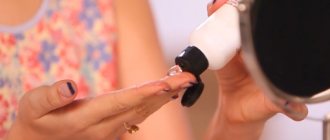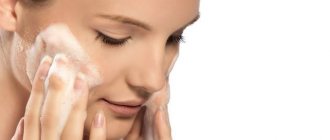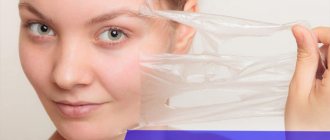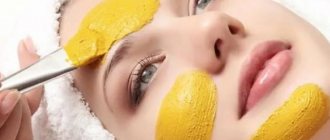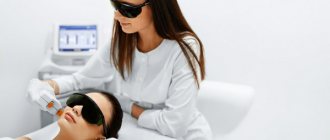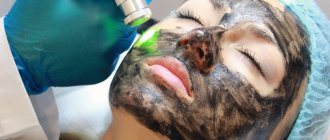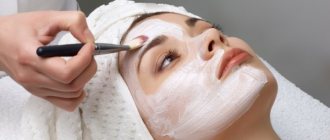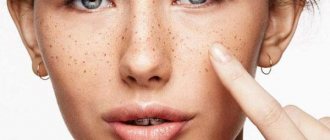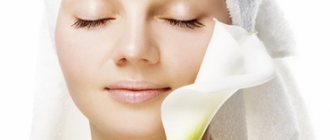With the onset of puberty, the body begins to work in a new way. The hormonal system is also being rebuilt. The sebaceous and sweat glands work more actively. Because of this, pores become clogged much faster than before. An unpleasant shine, acne, and blackheads appear on the skin. To minimize these phenomena during adolescence, the skin needs care. But since the changes have not yet been completed, gentle cleansing is recommended. At this stage, the following cosmetic procedures are suitable for teenagers:
- ultrasonic facial cleansing;
- masks based on natural ingredients;
- light scrubbing.
It is better to use soap- and alcohol-free cleansers to avoid drying out your skin. Cosmetics based on fruit acids have a light exfoliating effect. Various tonics with medicinal herbs have a healing and anti-inflammatory effect. Such care will help remove dead epidermal cells and remove impurities, which will provide renewal, nutrition and hydration.
After 30 years, the skin is already formed. The condition of the skin is affected not only by the internal functioning of the body and atmospheric pollution, but also by stress. Renewal is hampered by the fact that collagen begins to be produced in smaller quantities, and the delivery of nutrients to the deep layers of the dermis worsens due to various blood flow disorders. The skin loses moisture faster, the face becomes less elastic.
At this age, it is possible to use more aggressive types of chemical peeling. Carbon peeling is one such procedure. After it, the face looks significantly fresher and younger, the tone is evened out, and small expression wrinkles are smoothed out.
After 40 years, laser resurfacing and chemical peeling PRX-T33 with a pronounced anti-age effect are recommended.
How often to exfoliate your face
The life cycle from the moment of cell division until the moment when it passes through all the layers of the dermis and becomes part of the upper layers of the epidermis, i.e. surface of the skin is approximately a month. This time is not the exact interval between procedures, since the frequency of peelings is affected, among other things:
- general skin condition;
- the result you want to achieve;
- selected type of peeling;
- age.
If you are concerned about post-acne marks, the full course will range from 3 to 8 sessions. Depending on the procedure you choose, the frequency will vary from 3 days to a monthly visit to the cosmetologist’s office. If you want to remove age spots, you will need a course of 8-10 peeling sessions. At your first visit, the cosmetologist will draw up your personal schedule for procedures.
To understand the methods of cleansing the skin, below are the methods by which you can achieve the desired result.
Contraindications and indications for the procedure
Peeling can help solve a large number of cosmetic skin problems, including::
- Excess secretion of the sebaceous glands.
- Enlarged pores, comedones.
- A small amount of acne and other inflammations.
- Signs of aging – wrinkles, sagging, pigment spots.
Since exfoliation has a direct effect not only on the skin, but also on the woman’s body, it is worth studying in detail the conditions in which it is undesirable to carry out the procedure:
- Inflammatory processes.
- Active phase of acne.
- Skin diseases.
- Open wounds and other skin damage.
Particular care should be taken when approaching procedures when the condition of a woman’s body changes:
- What peelings can be done during pregnancy and is it possible to use chemical methods at all?
This question arises among women who are used to regularly exfoliating their skin, but are afraid of harming their baby. Cosmetologists advise using only gentle exfoliation methods, for example the mechanical method. It is prohibited to carry out procedures using ultrasonic and laser equipment, as well as chemical compositions with a high acid content.
- Is it possible to exfoliate during menstruation when acne breaks out?
During menstruation, the level of hormones in a woman’s body increases sharply, which is why inflammation often appears on the face. Also at this time, girls may have a lower pain threshold, and even a slight impact on the skin will bring severe pain. Therefore, cosmetologists do not recommend exfoliation during menstruation.
- When can you do peeling after cleansing your face and is it worth doing it at all?
The specificity of these procedures has a single goal - cleansing the skin and eliminating its imperfections. The combined use of both methods can have an excessively strong effect on the skin and lead to injury. It is preferable to alternate these procedures rather than carry them out together.
- Is it possible to do a mask and massage after peeling?
Since the skin is irritated after the procedure, you should not carry out additional manipulations in the first two or three days. Strictly follow the recommendations of the cosmetologist with whom you are undergoing the procedure. Often, independent attempts to improve the condition of the skin after deep cleansing can nullify the effect or lead to inflammation.
Mechanical cleaning
Mechanical peeling affects only the surface of the skin, without affecting the deeper layers of the dermis. Therefore, it can be called a relatively gentle process. After such cleaning, the skin is cleansed of atmospheric pollutants and dead particles of the epidermis, which improves the appearance and helps speed up metabolic processes.
Mechanical skin cleaning includes:
- Brossage - this procedure is performed using a device equipped with soft brushes or sponges. Depending on the goal, it is performed with an interval of 7-1 days.
- Peeling scrubs. Recommendations for the frequency of this type of cleansing depend on the oiliness of the skin. For oily skin – weekly; for dry skin, it is recommended to repeat scrubbing every two weeks. After a course of procedures, which lasts 2 months, a break is necessary to avoid the risk of damage from thinning of the upper layers of the dermis.
- Dermabrasion is skin resurfacing. It is performed using a device with special attachments coated with abrasive particles. Most often used for certain problems that require more serious treatment. For example, scars, old scars, deep wrinkles. Breaks between sessions can last up to 6 months, since the surface layer of the epidermis is removed almost completely
- Microdermabrasion. It is also a type of skin polishing, but the treatment is carried out with attachments containing microcrystals. The number of sessions varies from 5 to 20 sessions, and the break between courses is 1-3 months.
A cosmetologist may recommend alternating procedures, since the effectiveness of one type decreases with each subsequent use.
Is anesthesia necessary?
During the procedure, different layers of the skin are injured. This can cause pain or at best discomfort. However, with superficial peeling the sensations are quite tolerable; it is only a slight burning sensation. Therefore, anesthesia is not needed.
Medium peeling is a more serious effect. During the procedure, the discomfort may be stronger, so an analgesic is taken before the procedure.
Deep peeling has an even stronger effect on the skin. It removes the entire top layer (epidermis) and affects the dermis. Therefore, the procedure is more like a surgical operation. It is performed by a plastic surgeon with the help of an anesthesiologist. And in this case general anesthesia is given. But some time ago, gentle formulations for deep effects appeared. With them, an injection of an anesthetic drug is sufficient.
Hardware cleaning
Hardware peeling is performed using laser or ultrasound. Suitable for correcting even the most sensitive areas. The procedure itself is less traumatic, so the recovery period does not take much time.
This type of peeling can be used with a break of 3-4 months to maintain the achieved result.
Dry cleaning
The type of chemical peeling depends on the depth of exposure of the composition.
- superficial is made on the basis of fruit acids. To achieve the best result, it is advisable to mix different acids. One session every 3-4 months is enough to maintain the effect.
- Medium peeling is more aggressive than superficial peeling, since high concentration acids are used during the procedure. Due to the deep impact on the layers of the dermis, the effect of the procedure is more noticeable and lasts longer, but the recovery period also increases. It is recommended no more than 3-4 sessions per year.
- deep is the most radical method of chemical action on the deep layers of the epidermis to remove blemishes. After the procedure, the skin is completely renewed. One session is enough for significant results.
But high efficiency comes with high risks. The procedure is not recommended to be carried out at intervals of less than 1 year.
Surface
It is carried out by mechanical and chemical (using fruit acids) methods, affecting only the upper layers of the epidermis. Suitable for young girls who have minimal skin problems. This depth is effective in combating pimples and acne, blackheads and increased levels of secretion from the sebaceous glands, oily seborrhea, age spots and fine wrinkles.
It may be ineffective for women over 45 years of age with pronounced age-related skin changes, since only the upper layers of the epithelium are affected.
Regularity of peeling at home
The intermediate interval between peeling courses can reach three months. The minimum value is 30 days. This is due to the need to give the skin a break from treatment. At home, you can use ready-made products purchased in specialized stores, or hand-prepared analogues. Before you begin peeling, you should consider the characteristics of different skin types:
- if there are no problems with your skin and the condition of the epidermis is normal, you can use a wide range of cosmetics; Among those available at home, one can distinguish a combination in which nuts, salt or coffee are the abrasive, and sour cream is the softening base. A course of such peeling consists of 4 – 8 procedures per month (depending on age);
- dry skin requires more attention to achieve a noticeable effect. It is necessary to carry out at least 6 procedures at intervals of once every 7–10 days. The exact interval is determined by the skin reaction: if irritation occurs, procedures are performed less frequently;
- Finally, natural scrubs (for example, a combination of coffee grounds, sugar and salt) work well on oily skin. The principle of effective peeling for this skin type is intensive exfoliation with a simultaneous moisturizing effect; carried out twice a week;
- combination skin requires peeling less often, and only in the T-zone; 4 sessions per month are enough. Treatment of the entire face is required only when necessary.
In any business (and even more so when it comes to health), it is important to know when to stop. If you, impressed by the first results achieved, decide to increase the frequency of procedures for greater effect, you risk making a serious mistake. Constant exposure to the skin will lead to side effects and complications such as itching, peeling, rash, water imbalance and even inflammation! After such experiments, visiting a doctor will become inevitable.
Chemical peeling: benefits and harms
Video: Chemical peeling for the face: what is it, is it harmful, when and how often can it be done
https://youtu.be/IsAkGrDsz7A
A complex procedure for exposing the skin to acids is popular among women over 40 years of age. The results are close to surgical plastic surgery - a lasting effect of youth throughout the year. Approach chemical peeling responsibly - contact professionals with positive practice - look at reviews of the work of a cosmetologist. The results of those who underwent a “chemical burn” rejuvenation course. This is not a spontaneous negative effect on the skin, but a strictly dosed popular procedure. You must be prepared for the fact that traces of cosmetic intervention will be visible within 2-4 months. Be aware of this before going to a salon for a chemical peel.
